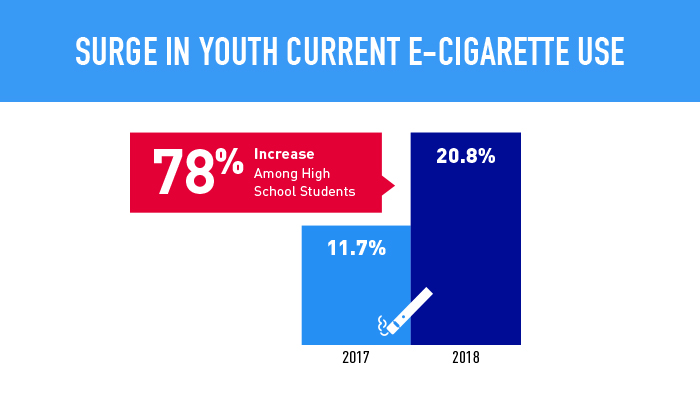FDA: Teen vaping surges
October 15, 2019

According to the FDA, there has been an increase in E-cigarette use from 2017 to 2018.
An estimated 20 percent of high school students were vaping or using e-cigarettes in 2018, according to the U.S. Food and Drug Administration.
That’s a significant increase from 2017, where 11.7 percent of high school students reported vaping or using e-cigarettes.
In the news, lots of people may notice all this controversy surrounding vaping. So, how are school officials addressing vaping on campus?
BCAL Principal Heath Roberts said the discipline for vaping is three days of out of school suspension and confiscation of the vaping device. Asked if enough was being done to stop vaping in the school, Roberts expressed that the punishment for vaping has increased from in-school suspension to out-of school suspension.
“I guess that starts at home. Parents need to talk to their kids about what they put in their body, and the overall consequences on health,” Roberts said. “We could have anti-vaping materials; we could have speakers. But when I say anti-vaping, I don’t want to leave out big tobacco. Everyone’s focus is on vaping when vaping is just the new thing to stop people from smoking. In past generations it was smokers. We used to have teenagers that smoked. Now teenagers aren’t smoking, but they’re vaping.”
Roberts said seven students were disciplined between Sept. 30 and Oct. 4 for vaping. He also added that even though vaping doesn’t have tobacco, it is still delivering nicotine into the body, and that smoking has just been traded in for vaping.
School nurse Dawn Deason said the health community doesn’t really have adequate information about the effects of vaping, and we only know of some issues with sinuses and the respiratory system. Deason said students rarely tell her that they vape. She also said people who developed illnesses that have recently been reported probably smoked tobacco or other drugs as well.